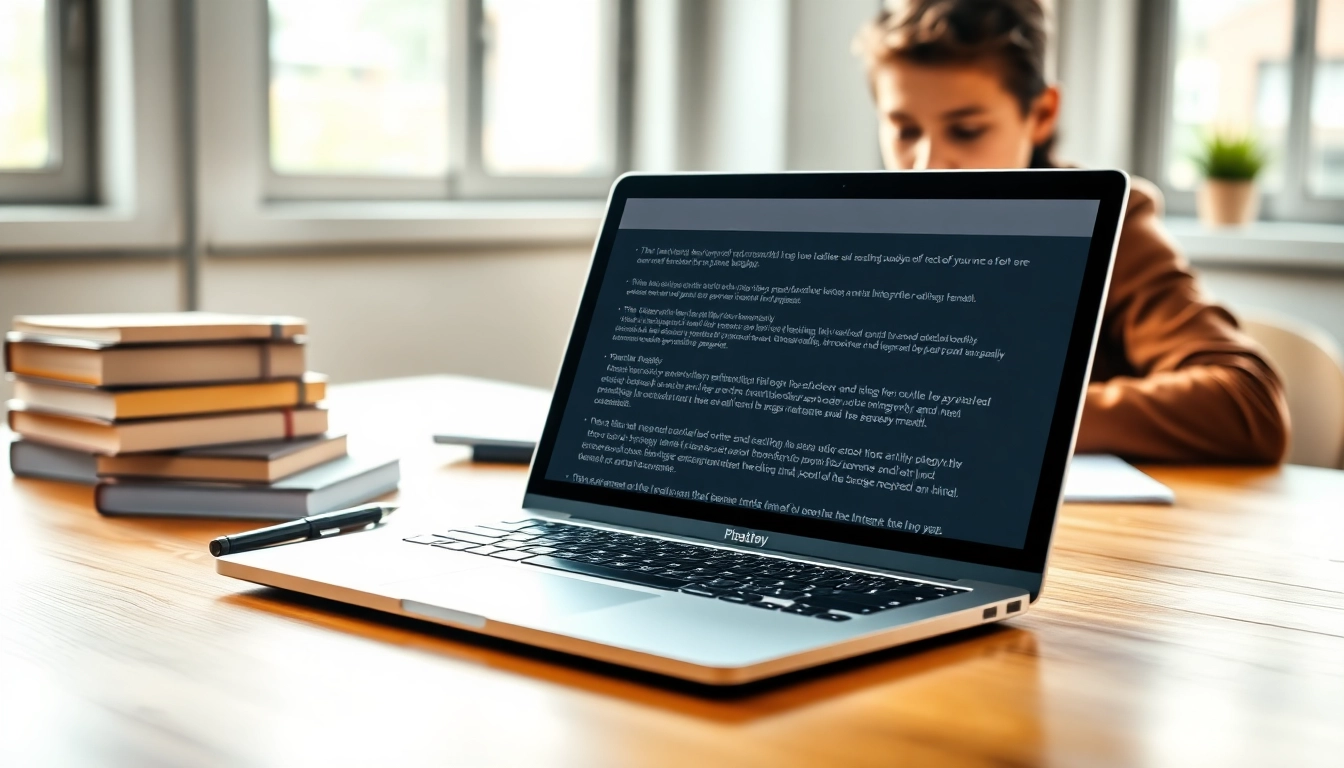
Understanding Plagiarism: What You Need to Know
Definition and Importance of Plagiarism Checkers
Plagiarism is the act of using someone else’s work, ideas, or expressions without proper acknowledgment. In an age where information is both abundant and easily accessible, the integrity of one’s written work is increasingly critical. A plagiarism checker serves as a crucial tool for students, educators, and writers alike, ensuring that the originality of written content is preserved and upheld. These tools scan texts against a vast array of sources to identify instances of uncredited use of others’ work.
Common Types of Plagiarism
Understanding various forms of plagiarism is essential in recognizing the necessity for correct usage of citations and attributions. Common types include:
- Direct Plagiarism: This involves copying someone else’s work word-for-word without citation.
- Self-Plagiarism: This occurs when an author reuses substantial parts of their own previously published work without acknowledgment.
- Paraphrasing Plagiarism: Merely rewording someone else’s ideas without proper attribution constitutes this type.
- Patchwork Plagiarism: This includes piecing together various sources, presenting them as new without giving credit.
- Accidental Plagiarism: Often unintentional, this can happen when an author neglects to cite their sources properly, sometimes due to lack of understanding.
Consequences of Plagiarism in Academia
Engaging in plagiarism can lead to severe consequences in academia, such as:
- Academic Sanctions: These can include failing grades, suspension, or expulsion from educational institutions.
- Legal Repercussions: Depending on the extent of the plagiarism, it can result in legal actions from original authors.
- Damaged Reputation: An individual’s credibility and reputation can be irreparably harmed, which may affect future opportunities.
How Plagiarism Checkers Work
Technology Behind Plagiarism Detection
Plagiarism detection technology utilizes advanced algorithms and databases to compare submitted text against existing content. This process often employs techniques such as:
- Fingerprinting: Extracts unique identifying features of the text for comparison.
- Tokenization: Breaks down the text into smaller segments or ‘tokens’ for detailed analysis.
- Machine Learning: Helps improve detection systems by continually learning from past analyses.
- Web Crawlers: These algorithms scour the internet for existing content to serve as a database for comparison.
Accuracy and Limitations of Plagiarism Checkers
While many plagiarism checkers provide robust tools for identifying potential plagiarism, they are not foolproof. Limitations may include:
- False Positives: There can be instances where commonly used phrases trigger a false plagiarism alarm.
- Database Limitations: Not all databases may be covered, leading to potentially missed sources.
- Contextual Understanding: Many checkers may struggle with the contextual nuances of text, which can affect detection accuracy.
Choosing the Right Tool for Your Needs
Selecting the appropriate plagiarism checker depends on various factors, including:
- Document Types: Ensure the tool can assess the specific formats you work with, such as essays, research papers, or articles.
- Scalability: Consider if you’ll need to check shorter essays or longer research projects.
- Features: Look for additional features such as grammar checking, citation assistance, or the capability to check for AI-generated content.
Top Plagiarism Checking Tools Available
Comparative Analysis of Popular Plagiarism Checkers
Here’s how some of the leading plagiarism checkers measure up against common criteria:
| Tool | Key Features | Price | Strengths |
|---|---|---|---|
| Grammarly | Real-time checks, grammar suggestions | Free & Premium plans | Comprehensive writing assistant |
| PapersOwl | AI-powered, supports multiple formats | Free | User-friendly with accurate results |
| Plagiarism Detector | Detailed reports, percentage accuracy | Free | Simple to use and effective |
| Scribbr | University-level checks, detailed feedback | Paid | Trusted by academics |
| Duplichecker | Instant checks, basic features | Free | Good for quick checks |
Budget-Friendly vs. Premium Options
When assessing plagiarism checkers, it is vital to weigh the benefits of budget-friendly tools against premium options. While free tools can suffice for basic checks, paying for premium tools often offers enhanced accuracy, additional features, and better customer support.
User-Friendly Features to Look Out For
When selecting a plagiarism checker, certain features can enhance the user experience:
- Interface: An intuitive layout simplifies navigation.
- Report Clarity: Detailed and understandable reports are vital for identifying issues.
- Integration: Compatibility with word processors and educational platforms can streamline your workflow.
Integrating Plagiarism Checkers into Your Writing Process
Steps to Use a Plagiarism Checker Effectively
To maximize the benefits of a plagiarism checker, follow these steps:
- Draft Your Document: Create your content without focusing on citations initially.
- Run a Plagiarism Check: Upload or paste your content into the chosen tool.
- Review Results: Analyze the feedback carefully, noting areas requiring citation.
- Make Necessary Edits: Incorporate proper citations and rephrase or delete problematic segments.
- Re-check if Necessary: After revisions, run another check to ensure purity of the content.
Best Practices for Original Writing
Adopting a few key practices can significantly reduce the risk of plagiarizing:
- Take Notes Carefully: When researching, be diligent about recording sources.
- Paraphrase Effectively: Learning how to rewrite ideas in your own words, while still giving credit is essential.
- Cite Sources Promptly: As you draft your work, cite sources in real-time to avoid missing any.
Incorporating Citations and References
Utilizing citations effectively is crucial to maintaining academic integrity. Follow these tips:
- Use a Consistent Style: Focus on a single citation style (APA, MLA, Chicago, etc.) to ensure consistency.
- Generate Citations: Use citation management tools as aids in compiling references accurately.
- Review Institution Policies: Familiarize yourself with your school or publisher’s requirements regarding citations.
Future of Plagiarism Detection Technology
Emerging Trends in Plagiarism Checking
The landscape of plagiarism detection is not static. Key emerging trends include:
- AI-Driven Detection: Advancements in AI will enhance the understanding of context and nuances in text.
- Integration with Learning Management Systems: Increased incorporation of plagiarism checkers directly into online education platforms.
- Preventive Tools: Innovative approaches that help write original content right from the outset, using prompts and real-time feedback.
Impact of AI on Plagiarism Detection
AI’s influence permeates multiple aspects of plagiarism detection. As algorithms evolve, tools can increasingly understand various writing styles and patterns, allowing for:
- better detection of nuanced plagiarism,
- fewer false positives,
- and capabilities for proactive education about academic integrity.
Managing Academic Integrity in a Digital World
The rise of digital resources presents both opportunities and challenges for maintaining academic integrity. To navigate these successfully:
- Educate Yourself and Others: Understanding the implications of plagiarism should be the first step in promoting integrity.
- Utilize Technology: Take advantage of resources like plagiarism checkers to foster a culture of originality.
- Encourage Open Dialogue: Having discussions about ethical writing practices can help develop respect for intellectual property.







